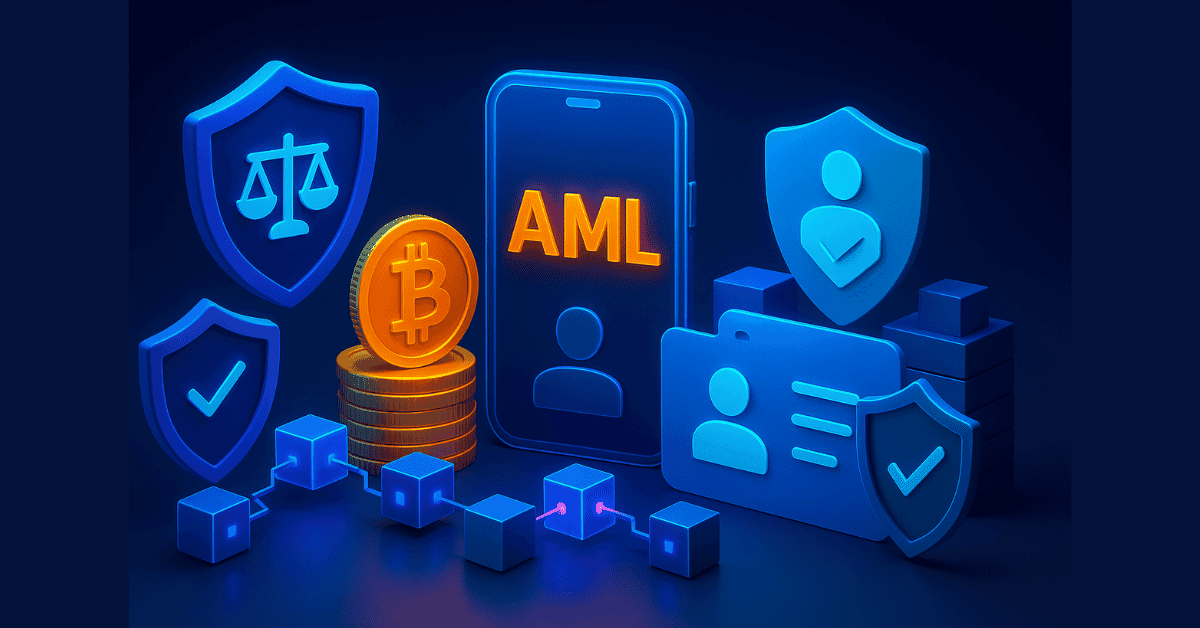
AML and Its Necessity in the Crypto Space
1. What Is AML and How Does It Work?
AML (Anti-Money Laundering) refers to a set of legal frameworks and regulatory measures designed to detect and prevent the process of converting "dirty money" into legitimate assets. In the crypto space, AML is often implemented alongside KYC (Know Your Customer), especially on centralized exchanges (CEX) such as Binance, Coinbase, and OKX.
AML activities are typically built on four key pillars:
- User identity verification (KYC)
- Account and transaction risk assessment (CDD – Customer Due Diligence)
- Monitoring and reporting suspicious behavior (SAR – Suspicious Activity Reporting)
- Compliance with sanctions and restrictions on money transfers (Sanctions Compliance)
2. Why Is AML Crucial in Crypto?
Cryptocurrencies possess three key characteristics that make them attractive for financial crime:
- High anonymity (wallets on blockchain are not directly tied to identity)
- Ease of cross-border transactions
- Lack of global unified legal framework
Without AML enforcement, money laundering organizations could exploit CEXs, DeFi services, NFTs, or stablecoins to transfer illicit funds globally with minimal traceability.
Implementing AML standards helps:
- Improve user safety
- Attract traditional financial institutions
- Build credibility with regulators
- Combat terrorism financing, fraud, and money laundering
3. AML vs. KYC: What’s the Difference?
Many confuse the two terms, but they serve different purposes:
| Aspect | KYC | AML |
|---|---|---|
| Purpose | Verifying user identity | Preventing money laundering |
| Scope | Initial stage of user registration | Includes KYC, ongoing monitoring, and reporting |
| Tools | ID cards, passport, selfie, email address | Risk analysis systems, behavioral monitoring |
| Timing | At account creation | Throughout service usage |
4. Global Implementation of AML
Organizations such as FATF, FinCEN, FCA, and MAS are tightening AML regulations on digital assets. Many countries now require exchanges to obtain licenses and comply with AML rules before operating legally.
In Vietnam, the State Bank of Vietnam is responsible for anti-money laundering regulations and is currently working to finalize a legal framework for virtual assets.
5. AML and Blockchain: A Future Path?
Blockchain can enhance AML implementation by:
- Providing transparent transaction records
- Automating monitoring via smart contracts
- Reducing auditing and compliance costs
However, challenges remain:
- On-chain data is abundant, but linking it to real-world identities is difficult
- Mixing services like Tornado Cash obscure traceability
- Legal inconsistencies across jurisdictions complicate enforcement
6. Conclusion
AML is not just a legal requirement—it’s a fundamental safeguard for the healthy growth of the crypto ecosystem. For cryptocurrencies to gain trust from traditional financial markets and grow sustainably, compliance with AML measures by exchanges, organizations, and users is essential.